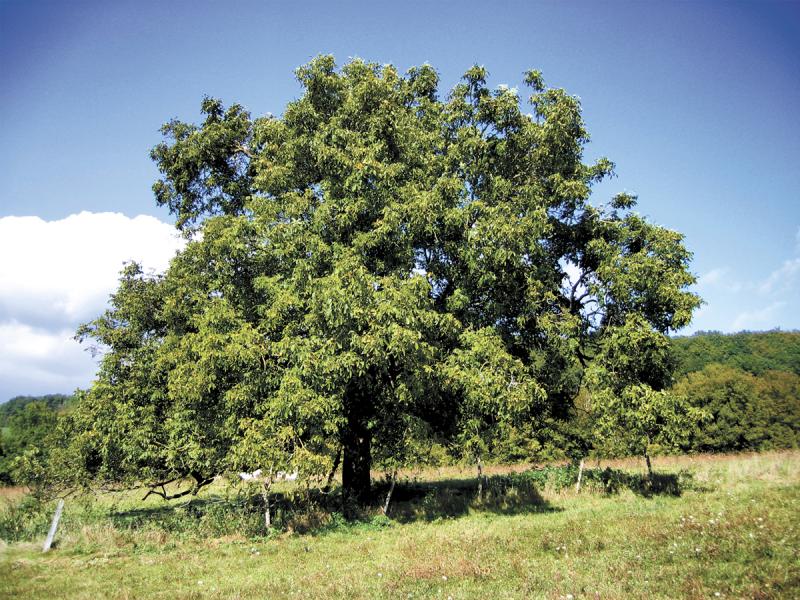Ships, like people, can become heroes. The RMS (Royal Mail Ship) Carpathia sailed her maiden voyage in 1903, but it wasn't until her ninth year that she answered a distress call in the North Atlantic. Capt. Arthur Henry Rostron ordered the crew to prepare hot drinks and soup, and not only have doctors standing by, but convert the public rooms into dormitories. The captain put extra stokers to fire up the ship's boilers, and the RMS Carpathia arrived just hours after receiving the distress call, rescuing 705 survivors of the RMS Titanic.
The formidable nature of the RMS Carpathia is shared in the garden with the like-named Carpathian walnut (Juglans regia). This walnut tree is native to the Carpathian mountains in Romania, among the largest undisturbed forests in Europe, with over 400 unique species of mammals, and 60 percent of all European brown bears. The Carpathian mountains can be harsh, so these trees are extremely hardy,
Carpathian walnuts do well even in harsh climates, and are grown farther north than common English walnuts. Carpathian walnuts are hardy in USDA zones 5-9.
Carpathian walnuts are mild-tasting with thin shells that crack easily. They are used for fresh eating as well as baked goods. The nuts are ripe in October. The trees start bearing nuts early, sometimes just four to eight years after planting.
Male and female flowers bloom on the same tree, so these trees are partially self-fertile. Self pollination can be sporadic, so it is best to plant several or to plant a different variety of English walnut tree nearby for cross-pollination.
These will become large trees, up to 60 feet tall with a spread of 40 to 60 feet across. The long leaves provide a nice shade. Carpathian walnut trees are fairly fast-growing, often adding two feet per year. Besides the nuts, Carpathian walnut trees provide valuable hardwood. Thinnings and pruned limbs make excellent firewood.
It is best to plant trees in early fall to give the root system time to become established before winter. Choose a planting site in full sun with acidic, well-draining soil. Carpathian walnut trees need a soil pH between 6.0 and 8.0. Dig down about a foot-and-a-half, and space the trees 40 to 60 feet apart.
Thoroughly water the trees after planting, and water once a week the first year. Once established, the trees can tolerate some drought. All walnut tree roots release the chemical juglone into the surrounding soil as a natural herbicide to kill off competing plants. Azaleas, rhododendrons and peonies are some of the flowers affected by this. Many vegetables such as peppers, eggplant, tomatoes and potatoes will not grow near walnut trees.
Luckily, the affected soil is limited to the outer canopy of the walnut tree, so you can space sensitive plants 50 feet from mature Carpathian walnut trees.
You can plant Carpathian walnut trees in windbreaks and wildlife plantings, where their thin-shelled nuts are easier to eat than native black walnuts, providing extra food to squirrels and deer.
Plant Carpathian walnut this fall, and after eight years, you may not rescue survivors in the icy Atlantic, but you will have healthy, homegrown nuts.



















































